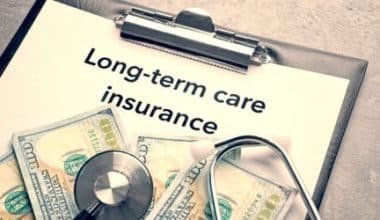Auto insurance is required for all drivers, whether they purchase a new or used vehicle. Though buying a used car can save you money, insurance rates for used vehicles are not always significantly lower—this can vary greatly depending on the make and model of your vehicle. We will look at buying the cheapest used car insurance, used car insurance cost, and the difference between new vs used car insurance grace period.
What is Used Car Insurance?
Used car insurance covers vehicles that were not purchased brand new from the manufacturer. In other words, it is similar to standard car insurance but for a used car, which may be more difficult to insure than a new car but will most likely be less expensive to cover.
Cheapest Used Car Insurance
The cheapest used car insurance is determined by a variety of factors, including the vehicle’s features and value. Consider insurance prices in advance to help you budget for a used car purchase while also ensuring that you have adequate coverage.
When buying used car insurance, most people want to find the best company with the cheapest rates. Rates vary greatly by provider—even for the same coverage—so knowing which company offers the cheapest car insurance for the used vehicle you drive is critical.
MoneyGeek compared the same coverage with multiple insurance companies for the popular used car and discovered that GEICO and USAA have the cheapest rates.
- Subaru Outback: AAR of $1,392
- Jeep Wrangler: AAR of $1,416
- Honda CR-V: AAR of $1,439
- Subaru Forester: AAR of $1,465
- Ford Escape: AAR of $1,476
- Ford F-150: AAR of $1,505
- Chevrolet Equinox: AAR of $1,511
- Jeep Cherokee: AAR of $1,521
- Toyota Tacoma: AAR of $1,527
- Toyota RAV4: AAR of $1,555
Other vehicles with lower insurance costs include the Buick Lucerne, Toyota Camry, and Volvo V-70. However, specific insurance rates vary depending on the driver and the vehicle’s features.
Cheapest Used Car Insurance Providers
- Geico
- AAA
- USAA
- Progressive
- Mercury
Used Car Insurance Cost
For minimum coverage, used auto insurance costs an average of $60 per month ($716 annually). A minimum coverage policy may make the most sense, particularly for older used vehicles. Because older used cars aren’t as valuable as new ones, the payout from a full coverage policy if the vehicle is totaled may not be worth the additional premium cost.
Factors Influencing the Cost of Used Auto Insurance
The cost of used car insurance is determined by a variety of factors. Some are specific to your vehicles, such as their price, likelihood of theft, and repair costs. Others are more personal, such as your driving record, insurance options, and zip code. Used car prices have also been steadily rising since 2015, which could mean that full coverage is more expensive due to higher replacement costs.
New vs. Used Car Insurance
The cost of used car insurance is comparable to that of new. Both offer the same essential car protection. However, certain optional coverage may be unavailable for used vehicles.
For example, many insurers offer new car replacements as an optional endorsement to drivers of new vehicles. If a covered vehicle is totaled within the first year or two of ownership, this pays to replace it with a brand-new model. Those purchasing used cars, however, will not be able to add this to their policies.
However, drivers generally have the same coverage options whether they insure a new or used vehicle and whether they buy a car from a dealership or a private seller.
What’s the Difference Between a New Car vs a Used Car Insurance Policy?
No policy differentiates between insuring a new and a used vehicle. However, coverage requirements may differ depending on whether the vehicle is financed or leased, and you may have additional coverage options, such as gap coverage, to consider.
Different makes and models will have a significant impact on your auto insurance premium. Some popular vehicles, such as the Subaru Outback and Honda CR-V, are surprisingly less expensive to insure than others. However, even if their makes and models are identical and only the years of manufacture differ, rates may vary due to new vehicle discounts, different safety features, or the cost of replacement parts.
Coverage types
If you lease or finance your vehicle, the lender will most likely have coverage type requirements, whether the vehicle is new or used. A finance company will usually require comprehensive collision coverage in addition to the state-mandated requirements in your area. These optional coverage types pay to repair or replace your vehicle after an accident in which you are at fault or damage caused by something beyond your control, such as hail damage. You are not required to add comprehensive or collision coverage to your policy if you own your vehicle outright.
Costs of coverage
Another factor influencing the cost of premiums is how much certain coverage types cost. Newer vehicles may include additional safety features that reduce the severity of injuries or vehicle damage. Because of the lower risk, the cost of certain coverage types, such as personal injury protection and collision, may be affected.
However, if newer vehicle parts are more expensive than used vehicle parts, collision and comprehensive insurance may be less costly for the used vehicle. Insurance companies consider all of these variables based on the vehicle’s VIN to help determine total insurance costs for the vehicle.
Discount option
Almost every insurance company provides discounts and frequently rewards policyholders who drive vehicles with advanced safety features or new vehicles. Anti-theft, airbags, and anti-lock brakes are examples of safety features that may qualify for a safety discount. Many providers also provide a new car discount, but the discount is usually only available for vehicles that are less than three years old. Discounts on safety features and the age of the used car may be substantial enough to offset the higher insurance cost of a new vehicle.
Used Car Insurance Grace Period
When buying a used car, your insurer may grant you a grace period of up to 30 days during which your existing insurance policy covers you before adding the new vehicle. Grace periods for adding a new, or new-to-you, car to your insurance policy vary by insurer.
Geico and Progressive, for example, both offer 30-day grace periods, whereas Nationwide’s is only 10 days. Before buying a used car, it is a good idea to check with your insurance company to see what your policy allows.
Gap Insurance on a Used Car
Gap insurance protects you if you owe more on a loan or lease than the vehicle is worth. Some companies, such as AAA, Allstate, or American Family, may offer gap insurance if your used car is only a few years old.
If your vehicle does not qualify for gap coverage, there are some alternatives. Some insurance companies provide loan/lease payoff coverage, which is typically easier to qualify for than gap insurance. If your vehicle is totaled and you owe more than the car is worth, the loan/lease payoff will only cover up to 25% of its value.
Buying Used Car Insurance
If you’re buying a used vehicle, you’ll need at least the minimum car insurance coverage required by your state before you can legally drive. When you buy a new insurance policy, the cost of your premium will be determined by factors such as where you live and the type of used car you buy.
Buying a Used Vehicle Without Insurance
You might be able to purchase a used car without insurance, especially if you buy from a private seller. However, you cannot legally drive the car home unless you have insurance, as driving without insurance or proof of financial responsibility is illegal.
If you already have a car insurance policy for another vehicle, you may have a grace period during which you will be covered even if you haven’t informed your insurer about your new vehicle. However, if you do not already have coverage, you will be unable to drive the car home legally.
How Long Do You Have to Get Insurance After buying a Used Car?
To legally drive a used car home, you must have insurance. Many insurers provide grace periods of up to 30 days when adding a car to an existing policy, during which you will be covered for driving the car home or to your DMV even if it is not explicitly listed on the policy.
If you are buying a used car from a dealership and do not already have insurance, you may be able to obtain coverage through an insurance broker who works with the dealership.
Do I Need Insurance Before I Buy a Used Car?
You may be able to purchase a used car without an insurance policy, such as from a private seller, but you will be unable to legally drive the vehicle. It’s a good idea to get a car insurance quote before buying a used car so you know how much it will cost to insure. Having a quote in hand will also make purchasing a policy after the sale goes more quickly.
Advice on Used Auto Insurance
- Frequently compare quotes. Because each insurance company sets its own rates, comparing quotes from multiple insurers is the best way to ensure you’re getting the best deal possible.
- Consider the various types of coverage you require. If you have a used car that is still worth a lot of money and know you won’t be able to replace it on your own if it is totaled in an accident, getting full coverage may make sense. However, used cars that aren’t worth much or that you can easily replace aren’t usually worth the extra monthly cost of a full coverage policy.
- Take advantage of any available discounts. Auto insurance companies frequently provide discounts for factors such as being a safe driver or paying your policy in full. These discounts can add up to significant monthly savings, so don’t be afraid to inquire about them when shopping for insurance.
- Investigate specialty insurance. If your used auto is particularly old or has collector value, you may be able to obtain classic insurance instead. While there are more restrictions on how you can use the vehicle, classic insurance is usually much less expensive than standard policies.
What Kind of Insurance Should I Get for My Used Car?
Used cars typically only require the state-mandated minimum amount of coverage, which often includes bodily injury and property damage liability insurance. Personal injury protection, MedPay, or uninsured motorist coverage are also required in some states.
Is Insurance Less on a Used Car?
A used car can often be less expensive to insure than a new one, especially if you have comprehensive or collision coverage. Because used cars are generally less valuable than new ones, they can be less expensive to repair or replace.
Is It Cheaper to Insure a Used or New Car?
A used car can often be less expensive to insure than a new one, especially if you have comprehensive or collision coverage. Because used cars are generally less valuable than new ones, they can be less expensive to repair or replace. On the other hand, auto insurance rates are determined less by whether the car is new or used and more by the specifics of the vehicle and your policy, such as the make and model of the vehicle, your location, and the amount of coverage that you carry.
Is Hyundai Elantra Cheap to Insure?
Hyundai Elantra insurance rates are relatively low, averaging $1,282 per year. This price is $146 less than the average price across all models in MoneyGeek’s research.
How Long Can You Drive Without Insurance After Buying a Car in Minnesota?
In most cases, the Minnesota new-car insurance grace period ranges from 2 to 30 days. The new-car grace period is the amount of time that insured drivers have to drive a newly purchased vehicle before adding it to their existing insurance policy.
Can I Drive Someone Else’s Car With My Insurance?
You’ll be covered when driving that car if you’re specifically listed on the car owner’s policy-even if it’s not your own. If you are not covered by the owner’s policy, your coverage will be determined by your consent.
Used Car Insurance FAQs
How long do you have to get insurance after buying a used car in Arizona?
Within 30 days
The insurance company and the owner are required by state law to submit proof of Arizona insurance within 30 days of initial registration.
How long do you have to get insurance after buying a used car in Georgia?
In California, the grace period for obtaining insurance is 30 days. That means you have 30 days to show the DMV proof of coverage. However, I do not advise waiting that long to obtain insurance. The earlier you obtain it, the better.
Do you need proof of insurance to register a car in Arizona?
Most states require proof of insurance or financial responsibility to register your vehicle and obtain tags, but seven states do not. Arizona, Mississippi, New Hampshire, North Dakota, Tennessee, Washington, and Wisconsin are among them.
Related Articles
- WHAT IS A FINANCE CHARGE? Overview, How it Works, and How to Calculate
- GAP HEALTH INSURANCE: Coverage, Plans, & What You Need!!!
- PAY EQUITY: Importance of Pay Equity Policy
- What Is Car Insurance Premium? Average Costs In 2022
- COMPANY CAR: Uses, Insurance, Leasing, and Guide






